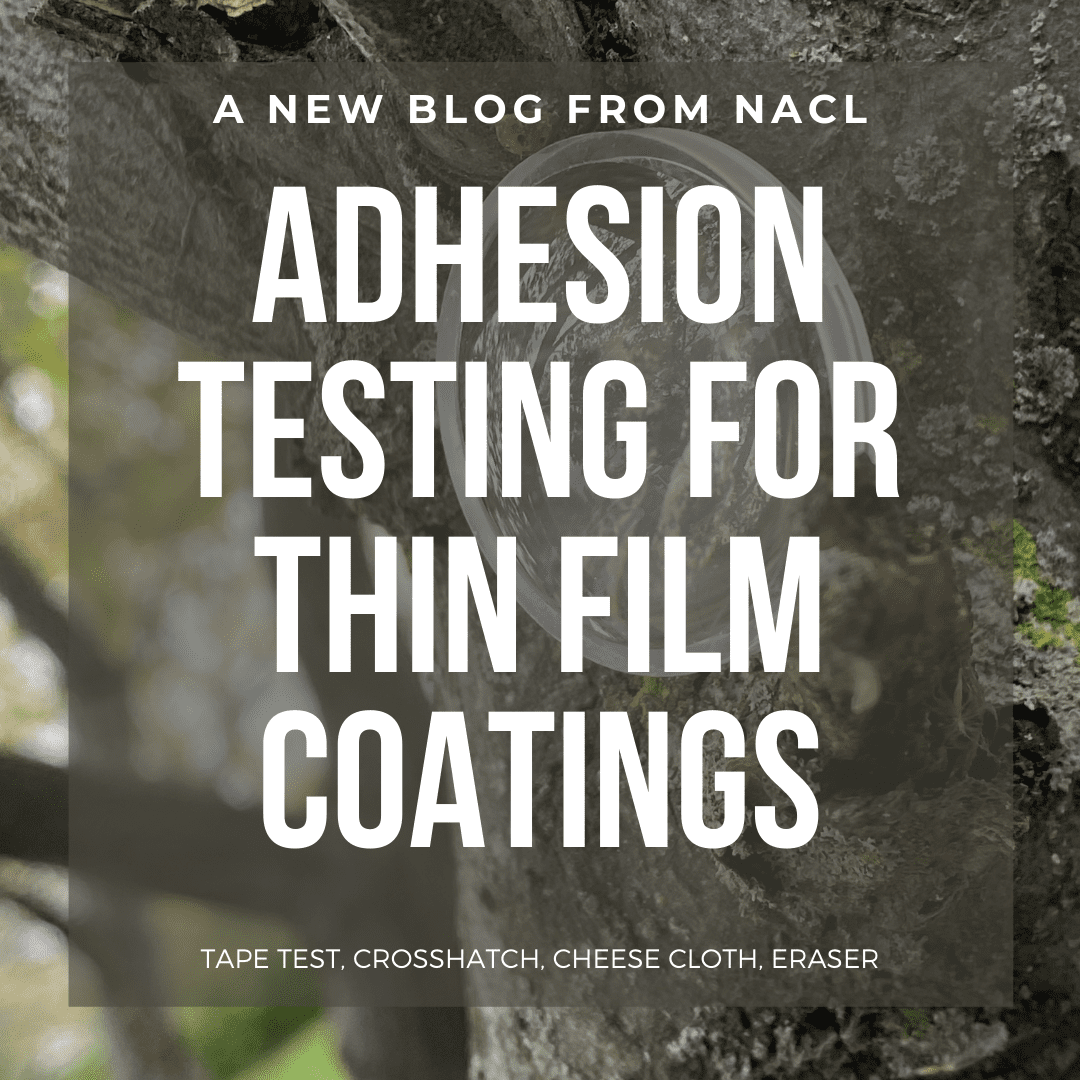One of the key mechanical tests coating service providers offer is an adhesion test. There are multiple ways to confirm acceptable levels of coating adhesion to a substrate, but most of them involve some form of adhesive being applied to the coated surface, and being removed at varying levels of speed at predetermined angles from the coating/substrate interface. Adhesion tests remain one of the most widely accepted and utilized ways in which optical fabricators confirm durability and reliability of their thin-film coating.
Common Adhesion Test Procedures
Adhesion testing is appropriate for coatings which will be exposed to handling and cleaning on a finished optical assembly. A commonly utilized adhesion test is found in MIL-C-48497. This test is performed as follows:
A piece of 1/2″ wide cellophane tape conforming to FED Spec. L-T-90, Type 1 is pressed firmly onto the coated surface of the component. The tape is quickly removed at an angle normal to the coated surface. An acceptable component will exhibit no signs of coating removal in the tested area. Removed film will have a higher reflectance or multi-color sheen to it than the clear cellulose tape surface. Other more aggressive tapes and destructive testing may be performed depending on the severity of use an optic may experience in its usable life-cycle.
Other military and ASTM standards cover various ways to confirm coating adhesion as well. Most tests are performed by a human inspector, and are not automated.
Aggressive Adhesion Test Procedures
Some adhesion tests are more aggressive by either the force or angle of the pull of the adhesive from the coated surface, or the manipulation to the coated surface prior to the adhesive pull testing. One of the most aggressive is a crosshatch tape adhesion test. In crosshatch testing a square checker board or “hashtag” is cut into the coated surface with a razor at a predetermined spacing. The failure mode introduced to the film is then covered with the adhesive and aggressive repeated pulls are performed. This is an aggressive test as it introduces a failure to the film or breaches the film and then requires the coating to survive attack and pull-away from the adhesive film applied over the intentionally damaged surface. If a film survives this test, it can be assured for use in the field on high wear surfaces and on substrates that will see heavy use, cleaning, and environmental exposure. Typically this test is performed on wet coatings that are cured through heat or light. Examples would be UV cured or thermally cured resin coatings that are flow, dip, or spray applied.
Adhesion Testing Sequencing
Another consideration when testing film adhesion is the sequence in which the tests are performed. Some military specifications require an adhesion test to be performed before, after, or before AND after environmental and abrasion testing is performed. In these military specifications the sequence is normally well defined and should be carried out in the determined sequence.
We’re Here to Help
Testing optical coatings always has some variables depending on the coating type, substrate material, application, and complexity of the test requirements (both mechanical and optical). It is important to work with your coating partner to determine how applicable the specified adhesion testing is to your program and decide on which tests should be performed to assure that your optics are properly coated. We’d love to chat more about your program and see if our coating solutions are a fit for your requirements. Please give us a call or send us an email so we can help you with your decision as to which process is most beneficial for your program.






